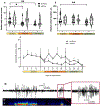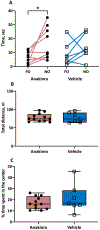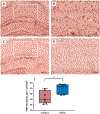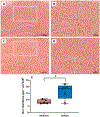Seizures and memory impairment induced by patient-derived anti-N-methyl-D-aspartate receptor antibodies in mice are attenuated by anakinra, an interleukin-1 receptor antagonist
- PMID: 33596332
- PMCID: PMC8536397
- DOI: 10.1111/epi.16838
Seizures and memory impairment induced by patient-derived anti-N-methyl-D-aspartate receptor antibodies in mice are attenuated by anakinra, an interleukin-1 receptor antagonist
Abstract
Objective: Neuroinflammation associated with anti-N-methyl-D-aspartate receptor (NMDAR) encephalitis may facilitate seizures. We previously showed that intraventricular administration of cerebrospinal fluid from patients with anti-NMDAR encephalitis to mice precipitates seizures, thereby confirming that antibodies are directly pathogenic. To determine whether interleukin (IL)-1-mediated inflammation exacerbates autoimmune seizures, we asked whether blocking the effects of IL-1 by anakinra, a selective IL-1 receptor antagonist, blunts antibody-induced seizures.
Methods: We infused C57BL/6 mice intraventricularly with purified serum IgG from patients with anti-NMDAR encephalitis or monoclonal anti-NMDAR IgG; subdural electroencephalogram was continuously recorded. After a 6-day interval, mice received anakinra (25 mg/kg sc, twice daily) or vehicle for 5 days. Following a 4-day washout period, we performed behavioral tests to assess motor function, anxiety, and memory, followed by hippocampus tissue analysis to assess astrocytic (glial fibrillary acidic protein [GFAP]) and microglial (ionized calcium-binding adapter molecule [Iba]-1) activation.
Results: Of 31 mice infused with purified patient NMDAR-IgG (n = 17) or monoclonal NMDAR-IgG (n = 14), 81% developed seizures. Median baseline daily seizure count during exposure to antibodies was 3.9; most seizures were electrographic. Median duration of seizures during the baseline was 82.5 s. Anakinra administration attenuated daily seizure frequency by 60% (p = .02). Anakinra reduced seizure duration; however, the effect was delayed and became apparent only after the cessation of treatment (p = .04). Anakinra improved novel object recognition in mice with antibody-induced seizures (p = .03) but did not alter other behaviors. Anakinra reduced the expression of GFAP and Iba-1 in the hippocampus of mice with seizures, indicating decreased astrocytic and microglial activation.
Significance: Our evidence supports a role for IL-1 in the pathogenesis of seizures in anti-NMDAR encephalitis. These data are consistent with therapeutic effects of anakinra in other severe autoimmune and inflammatory seizure syndromes. Targeting inflammation via blocking IL-1 receptor-mediated signaling may be promising for developing novel treatments for refractory autoimmune seizures.
Keywords: IL-1; anti-NMDA receptor encephalitis; autoantibodies; autoimmune seizures; cytokines; neuroinflammation.
© 2021 International League Against Epilepsy.
Conflict of interest statement
Disclosures
The authors have declared that no conflict of interest exists.
Figures





References
-
- de Montmollin E, Demeret S, Brule N, Conrad M, Dailler F, Lerolle N, Navellou JC, Schwebel C, Alves M, Cour M, et al. Anti-N-methyl-d-aspartate receptor encephalitis in adult patients requiring intensive care. Am J Respir Crit Care Med 2017. February 15;195(4):491–9. - PubMed
-
- Titulaer MJ, McCracken L, Gabilondo I, Armangue T, Glaser C, Iizuka T, Honig LS, Benseler SM, Kawachi I, Martinez-Hernandez E, et al. Treatment and prognostic factors for long-term outcome in patients with anti-NMDA receptor encephalitis: An observational cohort study. Lancet Neurol 2013. February;12(2):157–65. - PMC - PubMed
Publication types
MeSH terms
Substances
Grants and funding
LinkOut - more resources
Full Text Sources
Other Literature Sources
Medical
Miscellaneous

